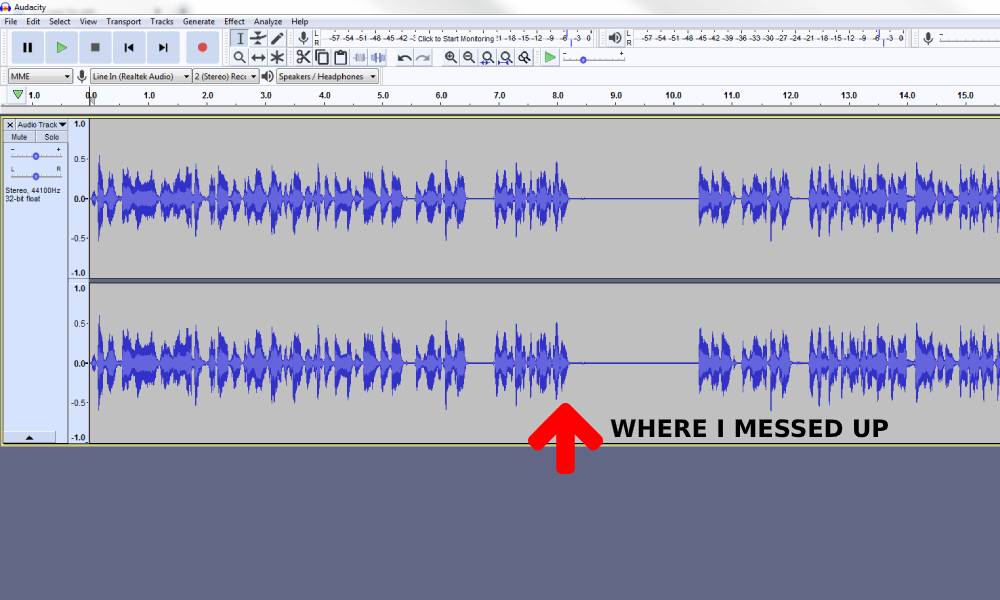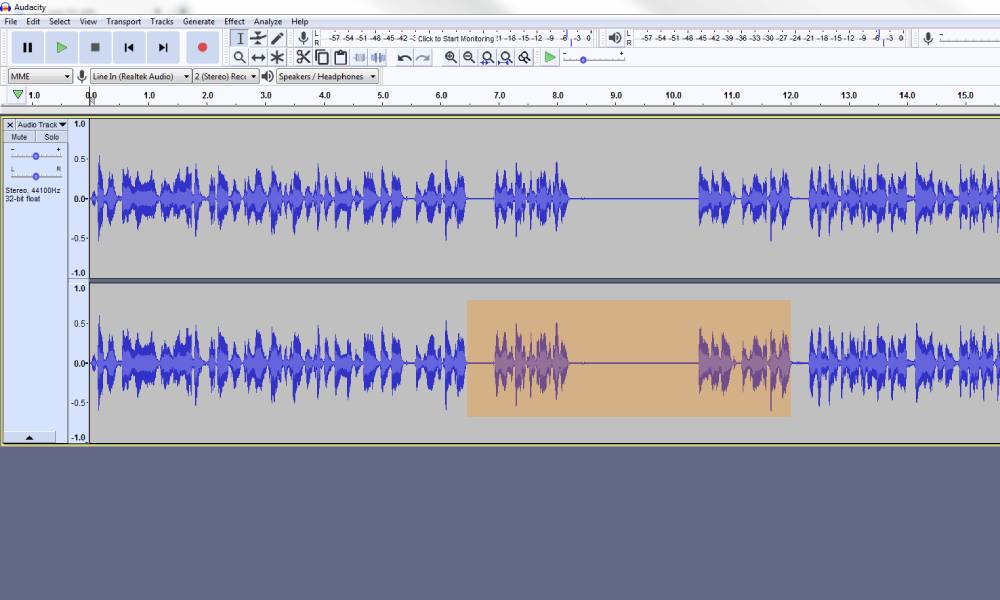Whether it’s pre-game intros or scripted reports, we’ve all had to voice over some elements for our broadcasts. They can go easily or be long-drawn out affairs if you’re unable to spit out all the words in the correct order.
I’ve always found it difficult to make an edit in my voice over tracks that sounded natural, with the right pause, the right breath sound and the right inflection…until recently. As my career has involved more and more ‘reads’ for news, sports and on-air use, I’ve discovered a really simple, easy way to get a seamless edit on your audio voice over tracks.

Take this audio above. It was a simple news read of a cancelled golf tournament in Canada due to the COVID-19 pandemic. I stumbled on a particular section of the voice over script that was mid-way through. Not wanting to go back to the beginning of the read and do it over again, I was able to employ this quick trick. I paused, re-gathered my thoughts and continued on with the read with one minor addition.
THE 2020 CANADIAN OPEN IS THE LATEST EVENT TO BE CANCELLED DUE TO COVID-19. SCHEDULED FOR A JUNE 11TH START IN TORONTO, THE CHAMPIONSHIP NIXED IN A RE-VAMPED PGA SCHEDULE. FIRST CONTESTED IN 1904, IT’S THE THIRD OLDEST CONTINUOUSLY RUNNING TOURNAMENT ON THE PGA TOUR BEHIND ONLY THE BRITISH AND US OPENS.
The script I was doing a voice over for

Before I continued on with the rest of the read after where I stopped, I made sure I went back and did a section of the last paragraph before the one I messed up on at full speed with the correct inflection (in green above). This allowed me to transition into the replacement paragraph with an accurate-sounding breath/pause before carrying on.

Then all I had to do was make the edit. My in point was the very last sound on the original recording from the paragraph before my mistake. I then matched that up with the very last sound of the replica paragraph in the re-recorded voice over. Making the edit this way allows me to keep in the breath from my re-recorded section, creating a more seamless transition in the audio.
Here’s the final product:

So why not just start fresh from where I messed up? Why not just go back a few words to the start of the sentence, instead of going back a line or two? The answer is pretty simple. Take a look at the pauses. In the original read, I paused slightly longer because my brain was trying to make sense of what was to come, which led to the mistake. In the re-recorded voice over edit, that mistake is edited out so I’m able to put a normal length breath in its place.
This technique creates a more seamless edit on your voice over audio without having to guess or play with pause lengths. It means your reads off-camera and on-air will be more natural sounding, even if you had multiple takes at recording a certain passage of audio.
Interested in voice over work? Take a look at this video on ways to record better sounding audio


